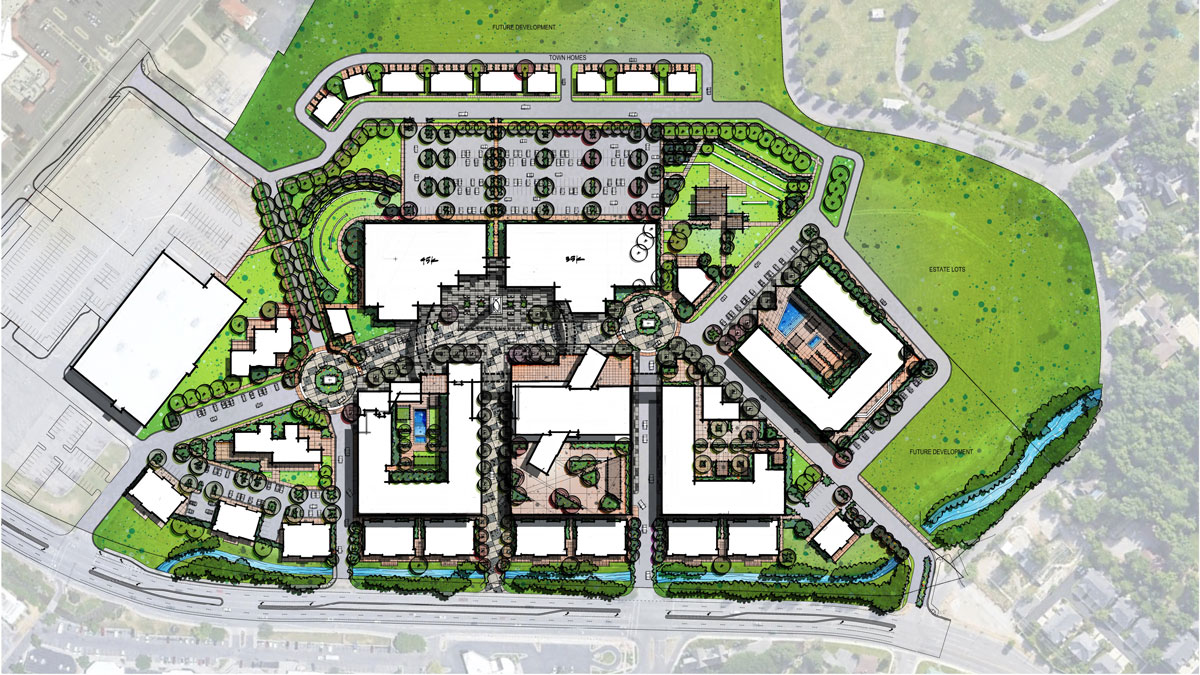There is significant value in graphic presentation. Good graphics can help sell projects and secure support from investors, city officials, community members, and other stakeholders.
Conceptual plan drawings help communicate the vision for a project. By expressing ideas in a visual way, these drawings help direct decision making and lead to better ideas and results.
At Lost Six Four, we understand the value of seeing your vision laid out in great detail. That’s why we put an emphasis on visual representation to make sure our plans reflect exactly what you are imagining.
How Loft Six Four Develops a Concept Plan
Here’s a window into how our studio uses Autodesk Sketchbook Pro and drawing tablets to create our signature concept plan renderings.
Step One: Set Up the Design Base
To begin, we typically use a 24″ x 35″ drawing space. Then we’ll load our scaled aerial imagery and any base layers exported from CAD files we’ve received from other consultants (such as civil engineers or architects). The size of the site determines the drawing scale, with 1″ = 20′ being the most common on our projects. Often, we’ll hold a team charrette in our office and scale in any sketches that are relevant.


Step Two: Initial Plan Line Work
Next, we’ll draw in the initial plan line work, including building outlines, site amenities, paving patterns, planting areas, and trees. This is considered a “first draft” of the plan and we’ll review it as a team or sometimes with other project stakeholders and consultants.

Step Three: Comments and Revisions
As we receive feedback, we add revision notes and sketches to the file on separate layers so we can preserve the original draft while exploring other options. Once there is a consensus, the desired changes are then incorporated into the final black and white plan.


Step Four: Add Color and Notes
Finally, it’s time to add color. We usually make a copy with annotations as well, fading back the color plan and adding callouts.


Whether you are looking for a better workflow or an easier way to collaborate, this process will serve you well. Visit our Creative Ideas page for some more examples of how we have used this process to create concept plans.
